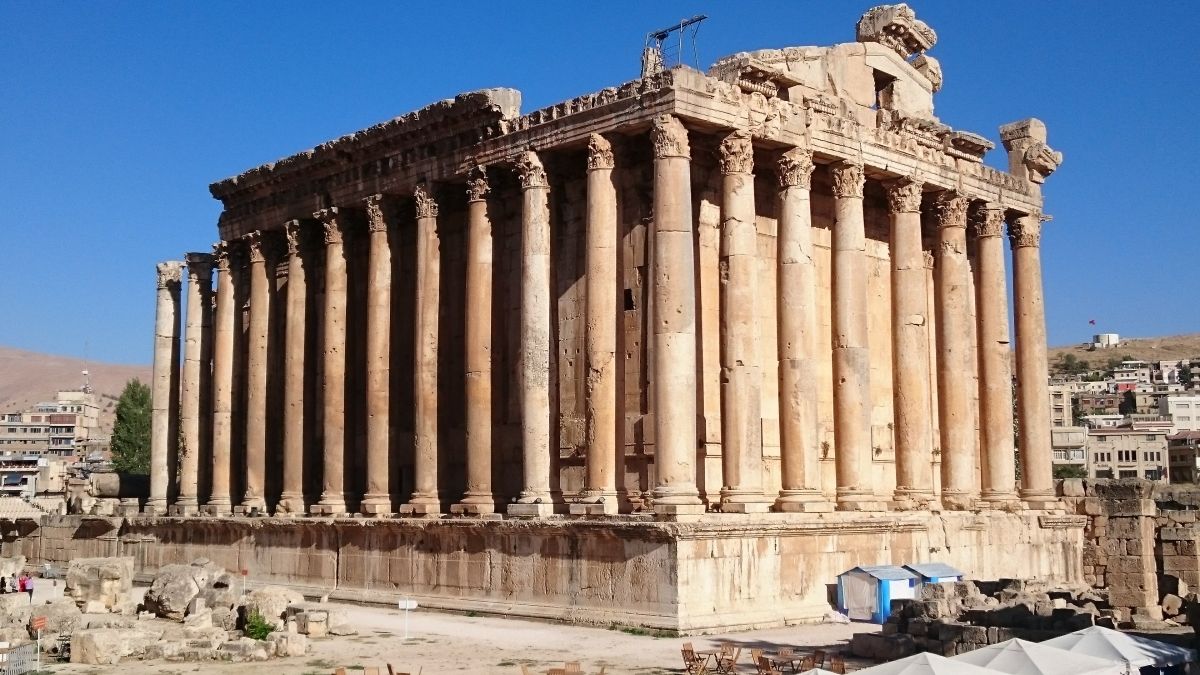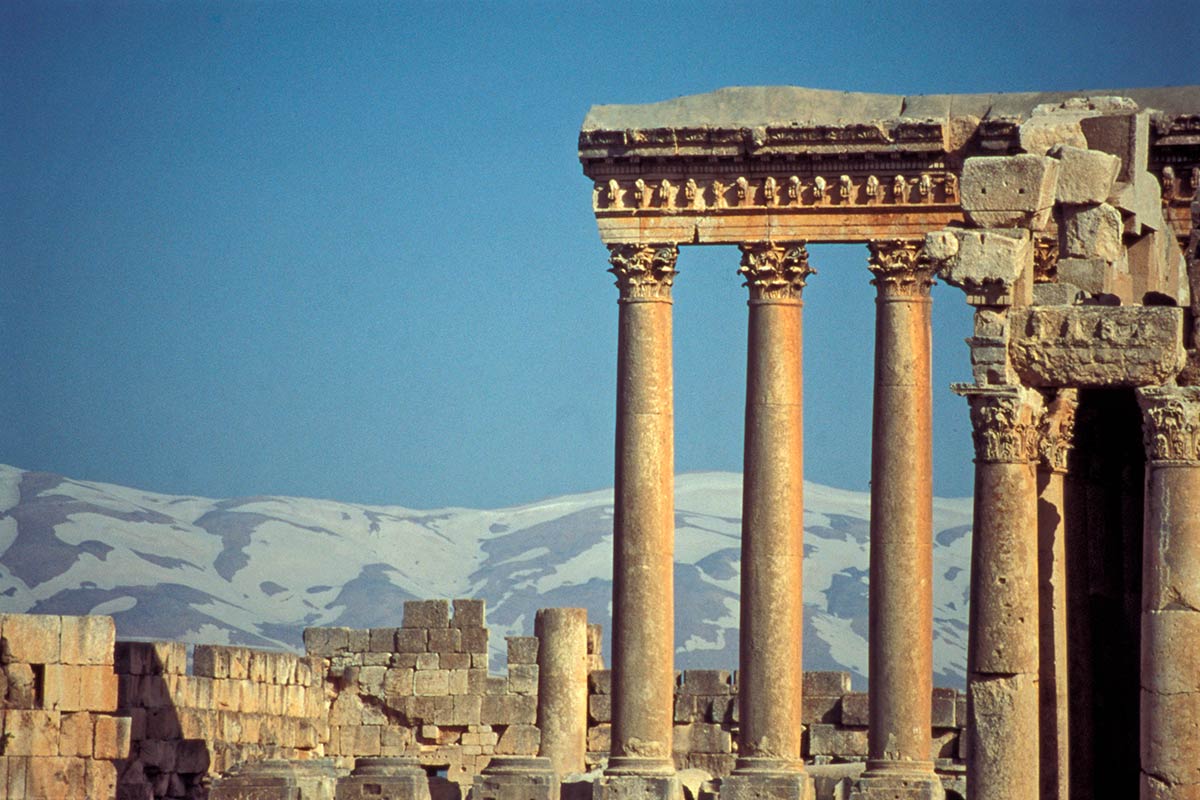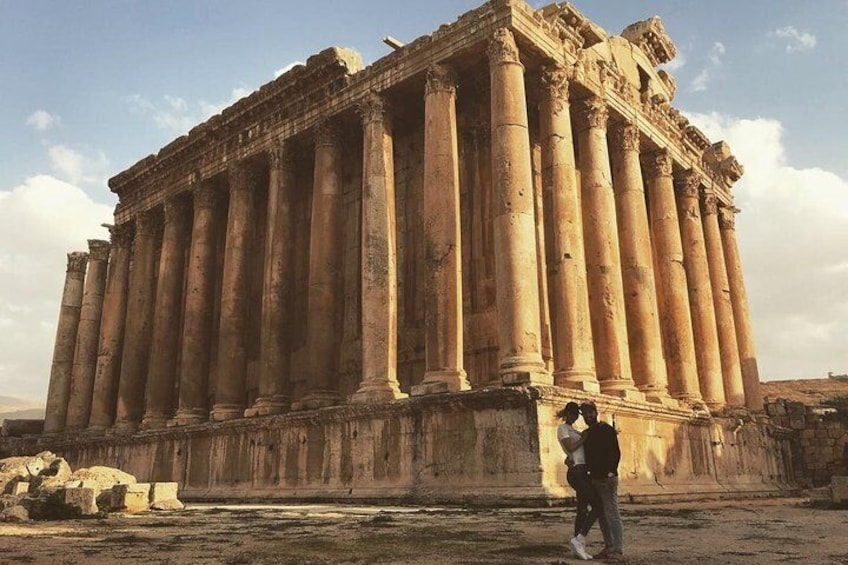Discover the Ancient Wonders: Temples of Baalbek Guide

If you're a history enthusiast or an adventure seeker, you're in for a treat! The Temples of Baalbek in Lebanon are a wonder to behold and a testament to the ancient world's architectural brilliance. As you explore these remarkable temples, get ready to be transported back in time.
Introduction to the Temples of Baalbek
Situated in the town of Baalbek in the Beqaa Valley, the Temples of Baalbek are a UNESCO World Heritage Site and one of the world's most important ancient Roman sites. The temples are dedicated to the Roman gods Jupiter, Bacchus, and Venus, and their grandeur will leave you in awe. The main attraction is the Temple of Jupiter, one of the largest Roman temples ever constructed. Its massive columns and intricate carvings are a sight to behold.
History and significance of the Temples of Baalbek
The history of the Temples of Baalbek dates back to the 1st century AD when the Romans were at the height of their power. The site was originally a place of worship for the Phoenicians and later transformed into a grand Roman sanctuary. The temples symbolised Roman might and served as a centre for religious and cultural activities.
The significance of the Temples of Baalbek lies not only in their architectural magnificence but also in their historical and cultural importance. They provide a glimpse into the ancient world and the religious practices of the Roman Empire. Exploring these temples will transport you back in time and give you a deeper understanding of the ancient civilizations that once thrived in this region.
Getting to Baalbek and visitor information
To visit the Temples of Baalbek, fly into Beirut-Rafic Hariri International Airport in Lebanon and then take a taxi or hire a car to Baalbek, approximately 85 kilometres away. The journey will take you through beautiful countryside and stunning mountain views.
When planning your visit, it's important to note that the temples are open year-round, but it's best to visit during spring or autumn when the weather is mild. The site offers guided tours, and hiring a local guide who can provide in-depth information about the temples and their history is recommended.
Exploring the Temples of Baalbek is truly a once-in-a-lifetime experience. As you wander through the ancient ruins and marvel at the architectural wonders, you'll gain a newfound appreciation for the rich history and cultural heritage of the Roman Empire. Don't forget to bring your camera to capture the breathtaking beauty of these ancient temples!

The Temple of Jupiter
Overview and history of the Temple of Jupiter
If you have an affinity for ancient wonders, the Temple of Jupiter in Baalbek is a must-visit destination. This magnificent Roman temple dates back to the 1st century AD and stands as a testament to the architectural prowess of the ancient Romans. Known as one of the largest temples in the Roman Empire, the Temple of Jupiter was dedicated to the chief god of the Roman pantheon, Jupiter.
The temple's construction began under Emperor Augustus's rule and was completed during the reign of Emperor Hadrian. Despite enduring centuries of wars and natural disasters, the temple has remained partially intact, leaving visitors in awe of its grandeur and historical significance.
Architectural features and design of the Temple of Jupiter
The Temple of Jupiter is renowned for its colossal size and intricate architectural details. The massive stone blocks used in the construction weigh up to 800 tons, making it a feat of engineering marvel even by today's standards. The temple's main entrance boasts six columns, each standing at a staggering height of approximately 22 meters. These columns and the remaining ones give visitors a glimpse into the temple's former glory.
Inside the temple, you will find a vast courtyard surrounded by a colonnade. The sanctuary, originally accessible only to priests, houses the remains of a sculpted altar and a statue of Jupiter. The intricate stonework, intricate carvings, and intricate detailing throughout the temple showcase the superior craftsmanship of the ancient Romans.
Significance and religious rituals associated with the Temple of Jupiter
As the largest temple dedicated to Jupiter, this sacred site played a crucial role in the religious practices of the Romans. It was believed that Jupiter, the king of gods, resided within the temple, and special rituals and ceremonies were conducted to honour him. These ceremonies included animal sacrifices, processions, and prayers offered by the priests and devotees.
The Temple of Jupiter also served as a centre for cultural and social gatherings. Festivals and games were organized here to celebrate Jupiter and promote unity among the people. Today, visitors can experience a glimpse of the temple's ancient glory and imagine the grand celebrations that once took place here.
A visit to the Temple of Jupiter in Baalbek is not just an architectural marvel but also an opportunity to immerse yourself in the rich history and religious practices of ancient Rome. So, if you're planning a trip to Baalbek, include the Temple of Jupiter on your itinerary for an unforgettable experience.

The Temple of Bacchus
If you are a history enthusiast or love exploring ancient wonders, then the Temple of Bacchus in Baalbek is a must-visit destination. This magnificent temple, dedicated to the Roman god of wine, Bacchus, is considered one of the best-preserved Roman temples in the world.
History and importance of the Temple of Bacchus
The Temple of Bacchus was built during the reign of Emperor Antoninus Pius between 150 and 250 AD. It is believed to have been constructed on the site of an earlier temple dedicated to a Phoenician deity. This temple served as a testament to the Roman presence in the region and played a significant role in the religious and cultural life of the ancient city.
Detailed exploration of the Temple of Bacchus architecture
The architectural marvel of the Temple of Bacchus is truly awe-inspiring. It showcases the exceptional craftsmanship and engineering skills of the Roman builders. The temple is constructed entirely out of limestone blocks, some weighing up to 60 tons. Its massive size and intricate detailing make it a breathtaking sight.
The temple follows a traditional Roman design, featuring a rectangular layout with a portico of Corinthian columns. Its main entrance is adorned with a grand staircase that leads to the pronaos, or vestibule, which in turn leads to the cella, or inner chamber. The cella is surrounded by a double row of columns, creating a magnificent ambience.
Intricate carvings and sculptures found in the Temple of Bacchus
One of the highlights of the Temple of Bacchus is the intricate carvings and sculptures that adorn its walls. The ornate reliefs depict mythological scenes, including the triumph of Bacchus and the ceremonial procession of gods. The skilful craftsmanship and attention to detail are evident in every carving, showcasing the mastery of ancient Roman artists.
Visiting the Temple of Bacchus is a truly immersive experience that transports you back in time. Every corner of this majestic structure reveals fascinating details about the rich history and cultural heritage of the Roman Empire. So, include this remarkable temple in your itinerary when you visit Baalbek.

The Temple of Venus
Overview and historical background of the Temple of Venus
Welcome to the majestic Temple of Venus in Baalbek! Steeped in history and rich in cultural significance, this ancient wonder is a must-visit for history enthusiasts and curious travellers.
Dating back to the 2nd century AD, the Temple of Venus is believed to have been built during the reign of Roman Emperor Antoninus Pius. Dedicated to the goddess Venus, it served as a place of worship and a symbol of Roman power in the region.
Architecture and layout of the Temple of Venus
Prepare to be in awe of the Temple of Venus's splendid architecture! This grand structure showcases the mastery of Roman architecture and engineering. The temple stands on a raised platform, surrounded by a peristyle courtyard. Its Corinthian columns, adorned with intricate carvings and decorative details, create a striking visual spectacle.
As you step inside, you will be greeted by a spacious central hall called the cella. The cella once housed a statue of Venus, which was the central focus of worship. The hall features beautiful vaulted ceilings and niches with smaller statues and offerings.
The significance of the Temple of Venus in ancient Roman culture
Immerse yourself in the ancient Roman culture as you unravel the significance of the Temple of Venus! In Roman mythology, Venus was the goddess of love, beauty, and fertility. The temple dedicated to her was a place of veneration, where people sought her blessings for happiness, love, and prosperity.
Beyond its religious importance, the Temple of Venus symbolised Roman authority and dominance in the region. Its grandeur and architectural magnificence showcased the power and wealth of the Roman Empire.
Whether you are a history buff or simply curious about the ancient world, exploring the Temple of Venus in Baalbek is an unforgettable experience. Witness the remarkable architectural details, feel the spiritual aura, and imagine the ancient rituals within its walls.
Your journey to the ancient wonders of Baalbek begins here, and the Temple of Venus is just the tip of the iceberg. Get ready to be transported back in time and discover the marvels of this archaeological treasure.

Exploring Baalbek
Other notable structures and points of interest in Baalbek
When visiting the ancient wonders of Baalbek, don't limit yourself to just the Temples of Baalbek. There are other fascinating structures and points of interest waiting to be explored.
One of the most notable structures is the Temple of Bacchus, dedicated to the Roman god of wine and revelry. This temple is known for its remarkably well-preserved architectural details and intricate carvings. It is considered one of the best-preserved Roman temples in the world.
Another must-visit attraction is the Great Court, a massive open area that once held religious and civic ceremonies. The gigantic stones that make up the foundation of the court are awe-inspiring and give you a sense of the immense scale of the ancient city.
Tips for visiting Baalbek and experiencing its ancient wonder
To make the most of your visit to the Temples of Baalbek and the surrounding area, here are some helpful tips:
-
Wear comfortable shoes: The site is extensive, and you will be doing a lot of walking, so wear comfortable shoes to explore the ruins comfortably.
-
Bring a hat and sunscreen: Baalbek can get very hot during summer, so protecting yourself from the sun is essential. Don't forget to bring a hat and apply sunscreen regularly.
-
Hire a guide: To appreciate the historical significance and architectural wonders of Baalbek truly, consider hiring a knowledgeable guide who can provide insights and stories about the site.
Local legends and myths surrounding the Temples of Baalbek
Baalbek has its fair share of local legends and myths, as with many ancient sites. According to one legend, giants placed the massive stones used in constructing the temples there. Another myth suggests that Baalbek was the landing site for extraterrestrial beings due to its construction's sheer scale and precision. These stories add an air of mystery and intrigue to the already captivating experience of visiting Baalbek.
So, when planning your trip to Baalbek, explore the other structures and points of interest, follow the tips for a comfortable visit, and immerse yourself in the local legends and myths surrounding these awe-inspiring temples.

Frequently Asked Questions about the Temples of Baalbek
Q: How do I get to the Temples of Baalbek?
A: Baalbek is located in Lebanon, approximately 85 kilometres northeast of Beirut. You can reach Baalbek by car or public transportation. Taxis and buses are available from Beirut, and the journey takes around two hours.
Q: Are there any entrance fees?
A: There is an entrance fee to visit the Temples of Baalbek. The fee includes access to the site and the museum. Please check the official website for the most up-to-date information on ticket prices.
Q: Are guided tours available?
A: Yes, guided tours are available at the Temples of Baalbek. Professional guides will provide insights into the site's history, architecture, and significance. You can join a group tour or arrange for a private guide.
Q: What is the best time to visit?A: The best time to visit the Temples of Baalbek is spring (March to May) and fall (September to November) when the weather is mild. It is advisable to avoid visiting during the hot summer months and the rainy winter season.
Q: Are there any nearby accommodations?
A: Yes, various accommodations are available in Baalbek and the surrounding areas, ranging from budget hotels to luxury resorts. Booking your accommodation in advance is recommended, especially during peak tourist seasons.
Q: Can I bring food and drinks to the site?
A: Outside food and drinks are not allowed inside the Temples of Baalbek. However, there are cafes and restaurants nearby where you can enjoy a meal or refreshments.
So, pack your bags, prepare your camera, and get ready to embark on an extraordinary journey through time at the Temples of Baalbek. It's an experience you will cherish for a lifetime!
